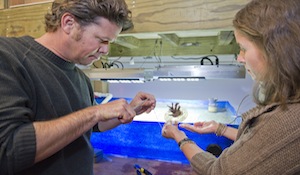Some of the reservations others raise about Gates’s work is purely because of the science. Large-scale transplantation is not economically feasible, Miller and others say, and as with other species, breeding coral to be resistant to the effects of global warming may narrow the genetic base and make it vulnerable to other things. It also […]


